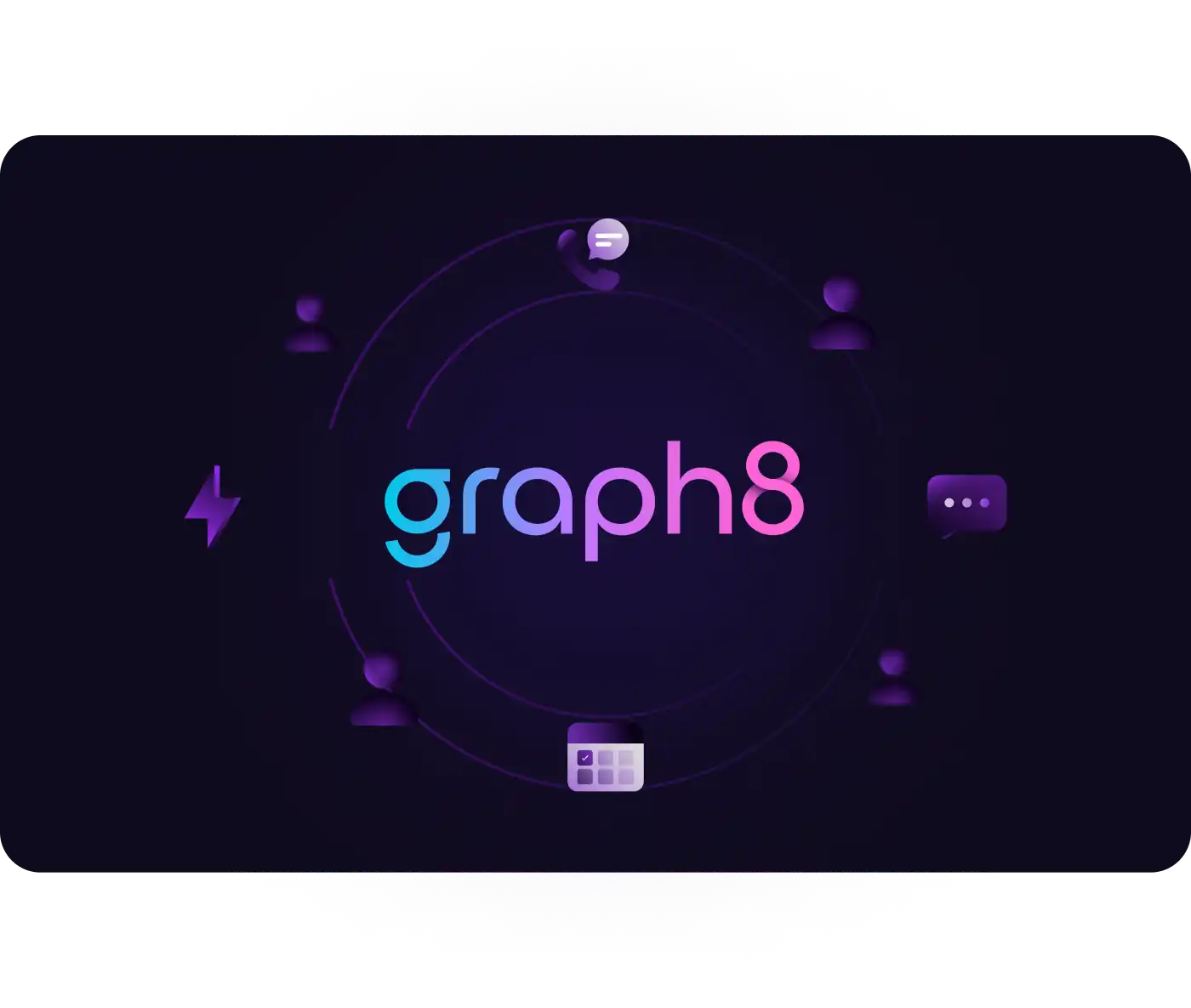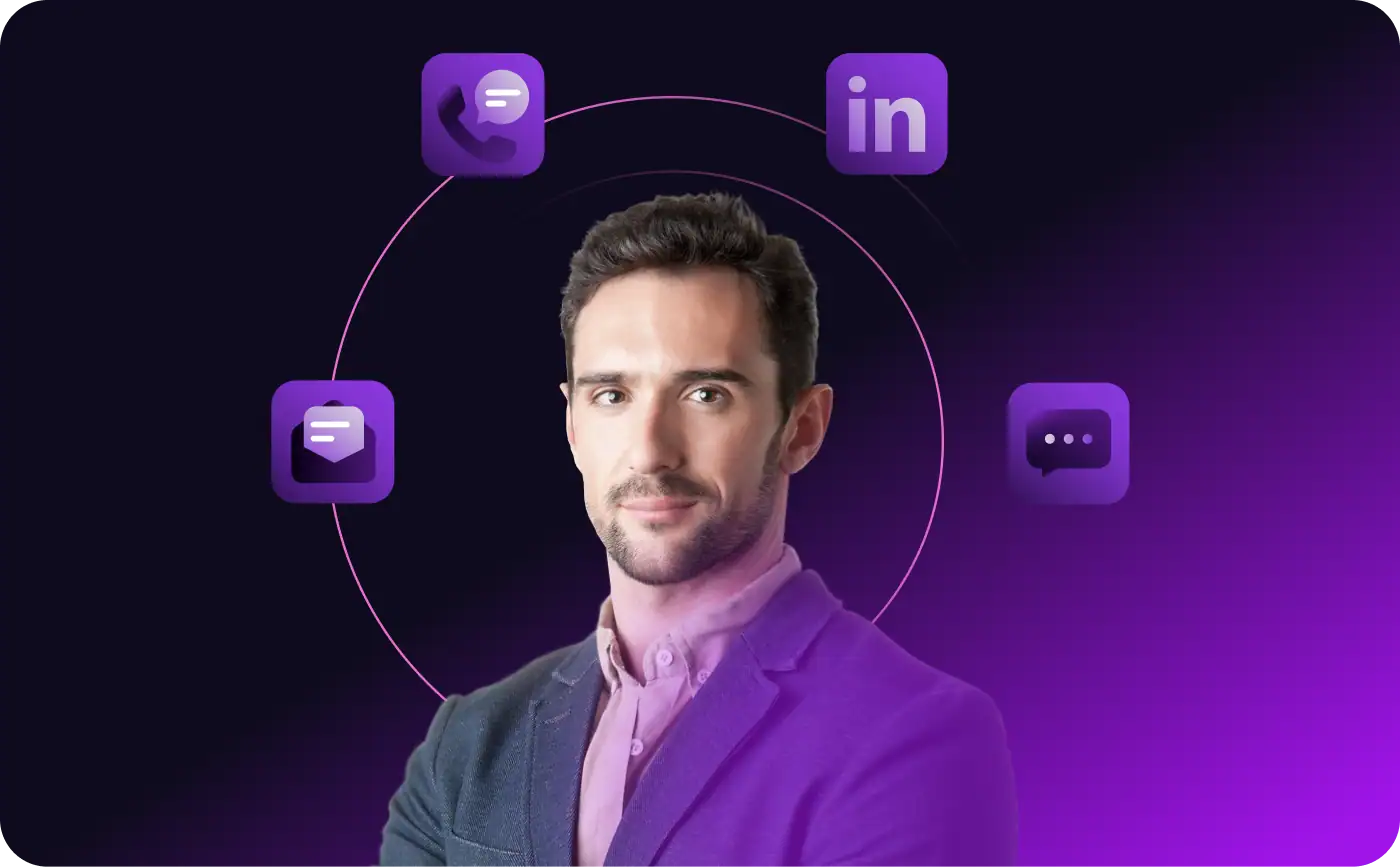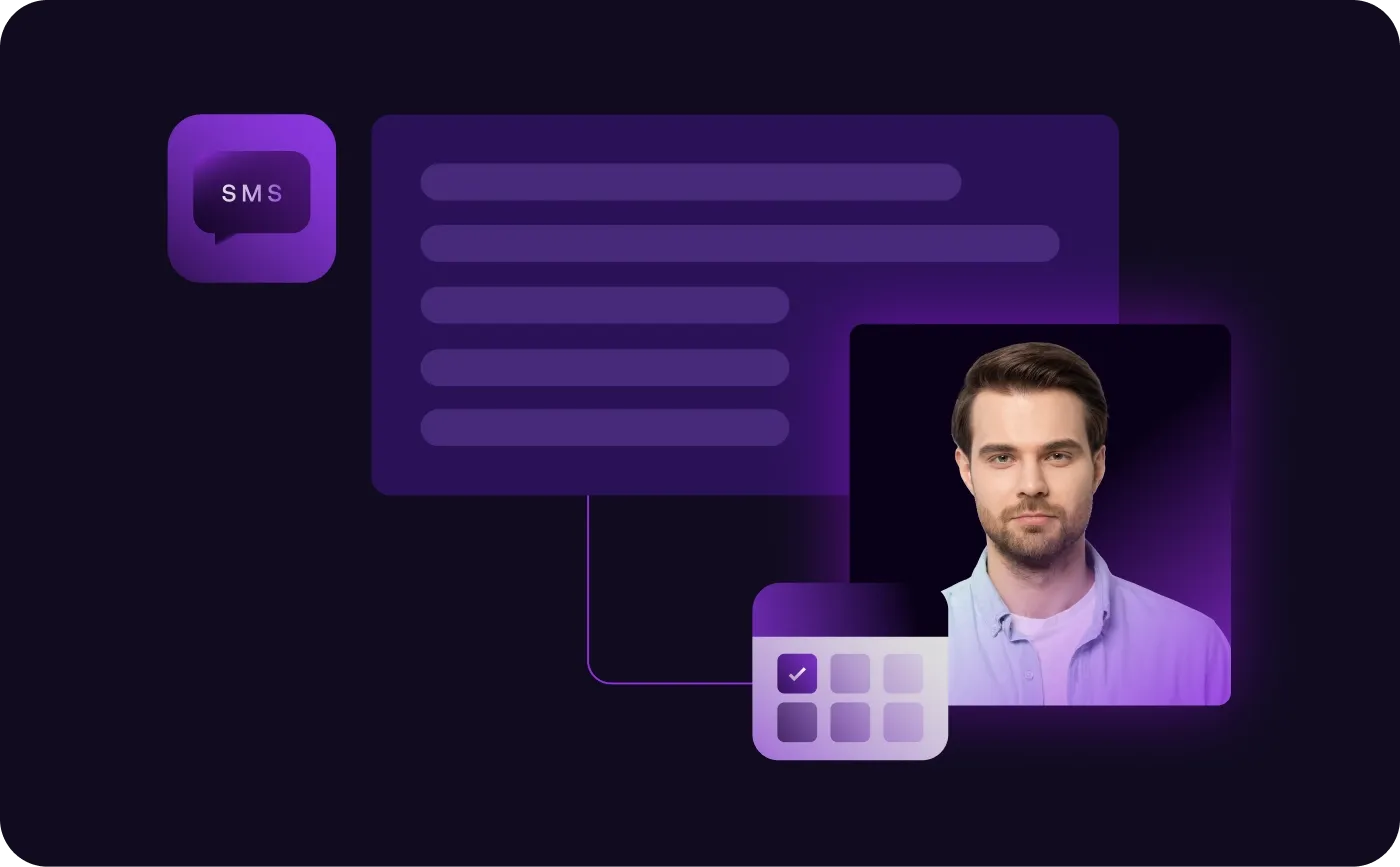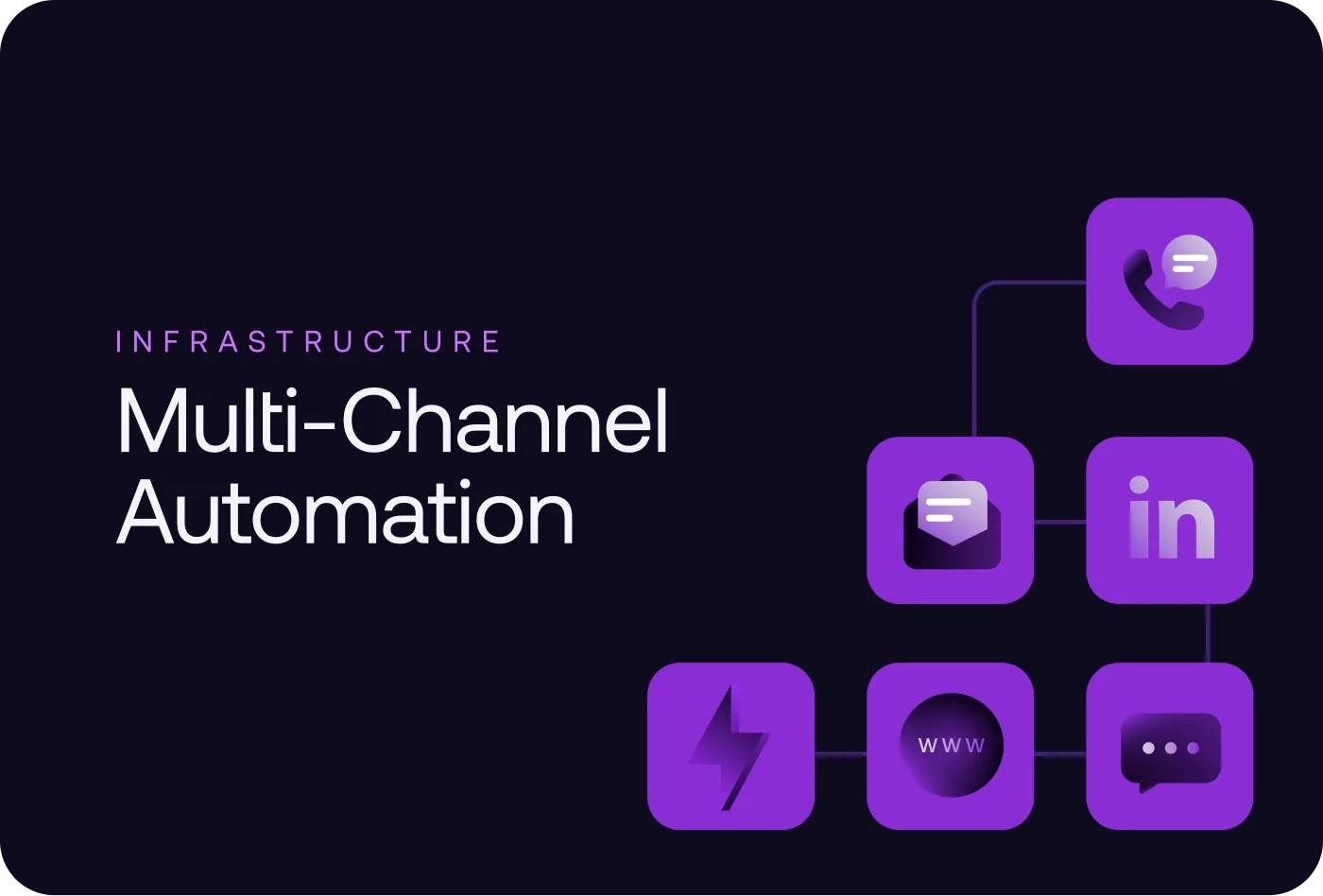In the fast-paced world of sales and marketing, timing and reach can make the difference between success and missed opportunities. Imagine being able to connect with your prospects across multiple channels, delivering the perfect message at the ideal moment—effortlessly. This isn't some futuristic dream; it's the transformative power of multi-channel automation. By leveraging diverse communication platforms and automating interactions, businesses can significantly enhance their sales outreach, ensuring they connect with the right prospects at the perfect time. This article explores how multi-channel automation enhances sales outreach, delving into its mechanisms, benefits, and real-world applications.
Understanding Multi-Channel Automation
Multi-channel automation refers to the integration and automation of multiple communication channels such as email, SMS, social media, phone calls, and messaging apps. This approach ensures that sales teams can reach prospects and customers wherever they are, using their preferred communication methods. The automation aspect involves using software to schedule, send, and manage these interactions without manual intervention, ensuring consistency and efficiency.
The Mechanisms Behind Multi-Channel Automation
- Unified Platforms: Platforms like Graph8 provide a unified interface where sales teams can manage all their communication channels. This integration is crucial for maintaining a consistent message across different platforms and for efficiently tracking customer interactions.
- Data-Driven Targeting: By leveraging data from various sources, multi-channel automation tools can segment audiences and tailor messages to specific groups. This ensures that communications are relevant and personalized, increasing the likelihood of engagement.
- Workflow Automation: Automation workflows can be set up to trigger communications based on specific actions taken by a prospect or customer. For example, if a prospect downloads a whitepaper, the system can automatically send a follow-up email and schedule a reminder call.
- AI Integration: Advanced platforms incorporate AI to analyze interaction data and optimize communication strategies. AI can identify the right content for multi-channel campaigns, create personalized messaging, and respond appropriately to emails or chat interactions.

Benefits of Multi-Channel Automation in Sales Outreach
1. Increased Efficiency
One of the most significant benefits of multi-channel automation is the ability to reach the same contact across multiple channels. By having the right B2B contact data connected with B2C persona data, including social media and other channels, the system can engage with a prospect in various ways. This comprehensive approach ensures that no opportunities are missed and maximizes the chances of connecting with the prospect.

2. Consistent Messaging
With multiple channels in play, maintaining a consistent message can be challenging. Multi-channel automation ensures that all communications are aligned with the company's overall strategy and branding. This consistency helps build trust and reinforces the company's value proposition.
- Statistic: 90% of customers expect consistent interactions across channels, emphasizing the importance of a unified multi-channel strategy (Mandala System Blog).
3. Enhanced Personalization
Automation tools can leverage data to create highly personalized messages. By analyzing customer behavior and preferences, these tools can tailor communications to each individual's needs and interests. Getting all data into a unified communication database for the contact record ensures that contextual understanding is reached across all channels. For instance, the system can pick up with an email where a chat conversation ended, creating a seamless customer experience.
- Statistic: 72% of consumers prefer to engage with brands through multiple channels, valuing the flexibility and convenience it provides (Gurus Coach) (Mandala System Blog).

4. Improved Tracking and Analytics
Multi-channel automation provides comprehensive tracking and analytics capabilities. Sales teams can monitor the effectiveness of their campaigns across different channels, understand customer behavior, and adjust their strategies accordingly. This requires tracking opens, responses, and interactions of the prospect, all of which are stored as events in the Graph8 Customer Data Platform (CDP) or other CDPs, ensuring that the prospect's contact profile and memory are continually advanced.
- Statistic: Businesses using two or more channels in any campaign experience 166% higher engagement rates (Mandala System Blog).
5. Scalability
As companies grow, managing customer interactions manually becomes increasingly difficult. Multi-channel automation allows companies to scale their outreach efforts without a proportional increase in resource requirements. This scalability is essential for sustaining growth and maintaining high levels of customer engagement.
Real-World Applications of Multi-Channel Automation
1. Lead Nurturing
Lead nurturing is a critical aspect of the sales process, involving continuous engagement with prospects until they are ready to make a purchase. Multi-channel automation can streamline lead nurturing by automatically sending relevant content and follow-up messages based on the lead's behavior and interests. This keeps the lead engaged and moves them through the sales funnel more efficiently.
2. Re-engagement Campaigns
Re-engaging inactive customers or leads is another area where multi-channel automation excels. By tracking customer interactions and identifying signs of disengagement, automation tools can trigger re-engagement campaigns. These might include special offers, personalized messages, or reminders about the benefits of the product or service.
3. Event Promotions
For companies that host events, webinars, or conferences, promoting these events across multiple channels is essential for maximizing attendance. Multi-channel automation can handle the promotion process, sending invitations, reminders, and follow-ups through email, SMS, social media, and other channels. This ensures that the event reaches a broad audience and encourages maximum participation.
4. Automated Email Campaigns
A company uses multi-channel automation to send personalized welcome emails to new leads, followed by a series of educational content emails based on the lead's industry and interests. This keeps the leads engaged and moves them down the sales funnel.
5. SMS Follow-Up
After an initial email, an automated SMS reminder is sent to prospects who have shown interest but haven't responded. The SMS contains a direct link to schedule a meeting, increasing the chances of engagement.

6. Social Media Engagement
A sales team uses automation to post regular updates on social media channels and respond to comments or messages promptly. This keeps the audience engaged and informed about the company's offerings.
7. AI-Driven Chatbots
Implementing chatbots on the company's website to handle initial inquiries, capture lead information, and provide instant responses. The chatbot can continue conversations started on the phone or email, ensuring a seamless experience.
8. Lead Scoring and Prioritization
Using AI to analyze interaction data and assign scores to leads based on their engagement across multiple channels. High-scoring leads are prioritized for follow-up calls or personalized email outreach.
9. Personalized Content Delivery
Creating and delivering content tailored to the lead's behavior and preferences. For example, a prospect who frequently visits product pages receives detailed case studies and success stories related to that product.
10. Multi-Channel Drip Campaigns
A series of scheduled communications delivered through different channels (email, SMS, social media) over a set period. Each message builds on the previous one, gradually educating and nurturing the lead.
Multi-Channel Automation Success
Graph8, a leading sales automation platform, provides a compelling case study of how multi-channel automation can enhance sales outreach. By integrating various communication channels into a single platform, Graph8 enables sales teams to manage their outreach efforts more effectively.

The Challenge
Cience, a sales development outsourcing firm, faced challenges in efficiently managing their outreach efforts across different channels. Their sales teams were spending a significant amount of time on repetitive tasks, and there was a lack of consistency in their messaging. They needed a solution that would allow them to scale personalized outreach content effectively.
The Solution
Cience implemented Graph8's multi-channel automation platform to streamline their outreach processes. The platform allowed them to automate follow-up emails, appointment scheduling, and data entry. It also provided robust tracking and analytics capabilities, enabling Cience to monitor and optimize their campaigns. By utilizing AI and Graph8's B2B data, they were able to automate hyper-personalization, ensuring that their communications were precise and relevant to each prospect.
The Results
Since implementing Graph8, Cience has seen a significant increase in efficiency and productivity. Their sales teams can now focus on high-value activities, and the consistency of their messaging has improved. The platform's data-driven insights have also helped them refine their strategies, leading to better engagement and higher conversion rates. The ability to create personalized outreach content at scale has resulted in more precise, relevant communication with prospects, ultimately contributing to a stronger sales pipeline for their clients.
Final Thoughts
Multi-channel automation represents a significant advancement in sales outreach, offering numerous benefits such as increased efficiency, consistent messaging, enhanced personalization, and improved tracking and analytics. By leveraging data and AI, companies can optimize their communication strategies and connect with prospects across various channels seamlessly.
In today's fast-paced business environment, incorporating multi-channel automation into your sales strategy is not just beneficial—it's essential. The global marketing automation industry revenue is projected to grow by 38.2% between 2021 and 2024, reaching $6.62 billion (Backlinko) (Mandala System Blog). By 2030, the multi-channel marketing market is expected to grow from $6.96 billion in 2023 to $28.6 billion, driven by the adoption of digital channels, personalization, and marketing automation (beehiiv Blog).
Businesses that fail to adopt these strategies risk falling behind their competitors. Platforms like Graph8 are leading this transformation, providing comprehensive solutions that empower sales teams to reach their full potential. For example, businesses using two or more channels in any campaign experience 166% higher engagement rates (Mandala System Blog), and customer retention improves by up to 91% when customers interact with a brand in more than one channel (beehiiv Blog).
Consider the success story of Cience, which saw a dramatic increase in efficiency and productivity after implementing Graph8's multi-channel automation platform. With improved messaging consistency and data-driven insights, Cience refined their strategies, leading to better engagement and higher conversion rates.
Now is the time to take action. Explore multi-channel automation solutions like Graph8 to transform your sales process and gain a competitive edge. Schedule a demo today, contact our sales team, or start a free trial to experience the benefits firsthand.
By adopting multi-channel automation, you position your business for sustained growth and success in an increasingly digital world. Don’t wait—embrace the future of sales outreach and stay ahead of the curve.

